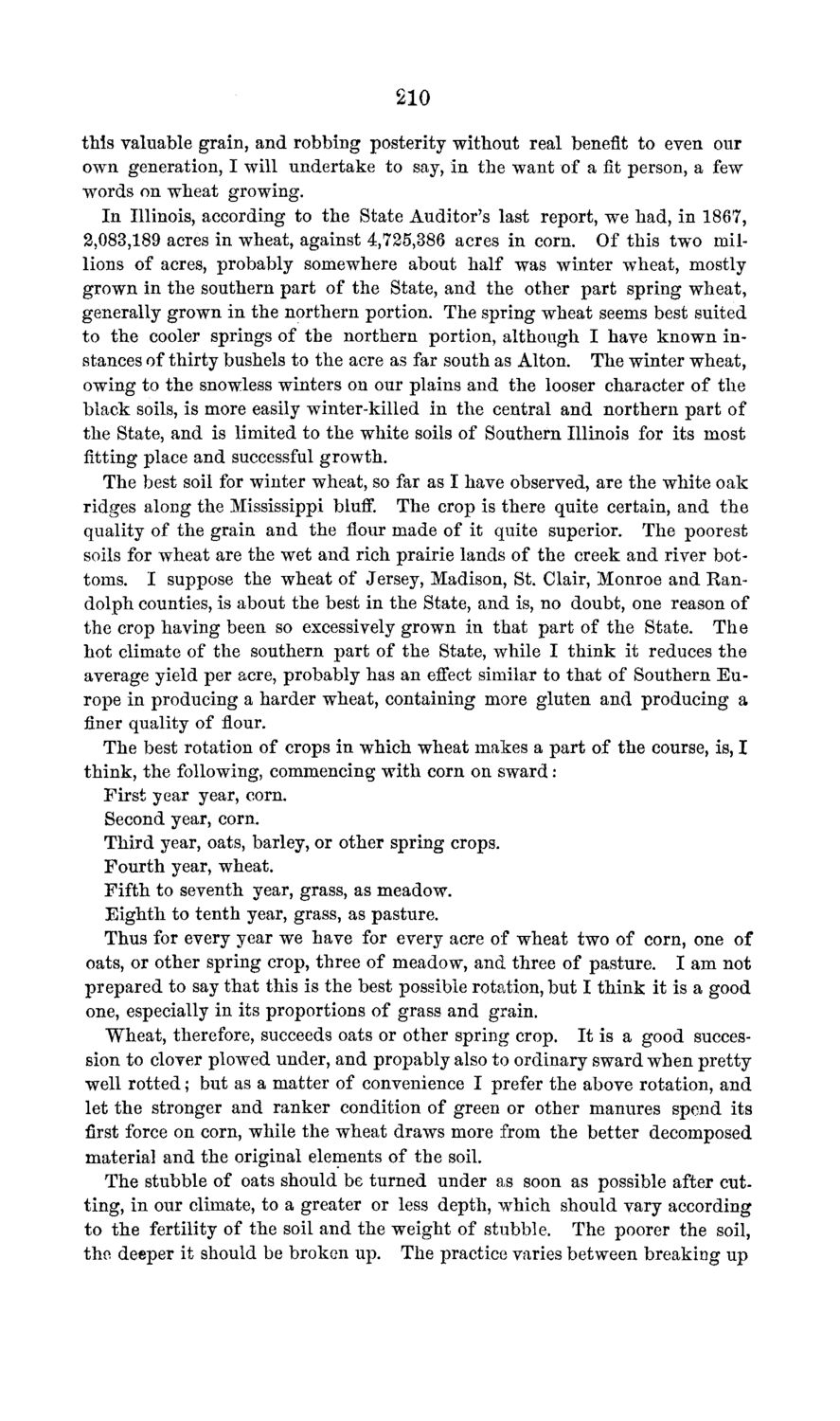| |
| |
Caption: Board of Trustees Minutes - 1869
This is a reduced-resolution page image for fast online browsing.

EXTRACTED TEXT FROM PAGE:
210 this valuable grain, and robbing posterity without real benefit to even our own generation, I will undertake to say, in the want of a fit person, a few words on wheat growing. In Illinois, according to the State Auditor's last report, we had, in 1867, 2,083,189 acres in wheat, against 4,725,386 acres in corn. Of this two millions of acres, probably somewhere about half was winter wheat, mostly grown in the southern part of the State, and the other part spring wheat, generally grown in the northern portion. The spring wheat seems best suited to the cooler springs of the northern portion, although I have known instances of thirty bushels to the acre as far south as Alton. The winter wheat, owing to the snowless winters on our plains and the looser character of the black soils, is more easily winter-killed in the central and northern part of the State, and is limited to the white soils of Southern Illinois for its most fitting place and successful growth. The best soil for winter wheat, so far as I have observed, are the white oak ridges along the Mississippi bluff. The crop is there quite certain, and the quality of the grain and the flour made of it quite superior. The poorest soils for wheat are the wet and rich prairie lands of the creek and river bottoms. I suppose the wheat of Jersey, Madison, St. Clair, Monroe and Randolph counties, is about the best in the State, and is, no doubt, one reason of the crop having been so excessively grown in that part of the State. The hot climate of the southern part of the State, while I think it reduces the average yield per acre, probably has an effect similar to that of Southern Europe in producing a harder wheat, containing more gluten and producing a finer quality of flour. The best rotation of crops in which wheat makes a part of the course, is, I think, the following, commencing with corn on sward : First year year, corn. Second year, corn. Third year, oats, barley, or other spring crops. Fourth year, wheat. Fifth to seventh year, grass, as meadow. Eighth to tenth year, grass, as pasture. Thus for every year we have for every acre of wheat two of corn, one of oats, or other spring crop, three of meadow, and three of pasture. I am not prepared to say that this is the best possible rotation, but I think it is a good one, especially in its proportions of grass and grain. Wheat, therefore, succeeds oats or other spring crop. It is a good succession to clover plowed under, and propably also to ordinary sward when pretty well rotted; but as a matter of convenience I prefer the above rotation, and let the stronger and ranker condition of green or other manures spend its first force on corn, while the wheat draws more from the better decomposed material and the original elements of the soil. The stubble of oats should be turned under as soon as possible after cutting, in our climate, to a greater or less depth, which should vary according to the fertility of the soil and the weight of stubble. The poorer the soil, the deeper it should be broken up. The practice varies between breaking up
| |